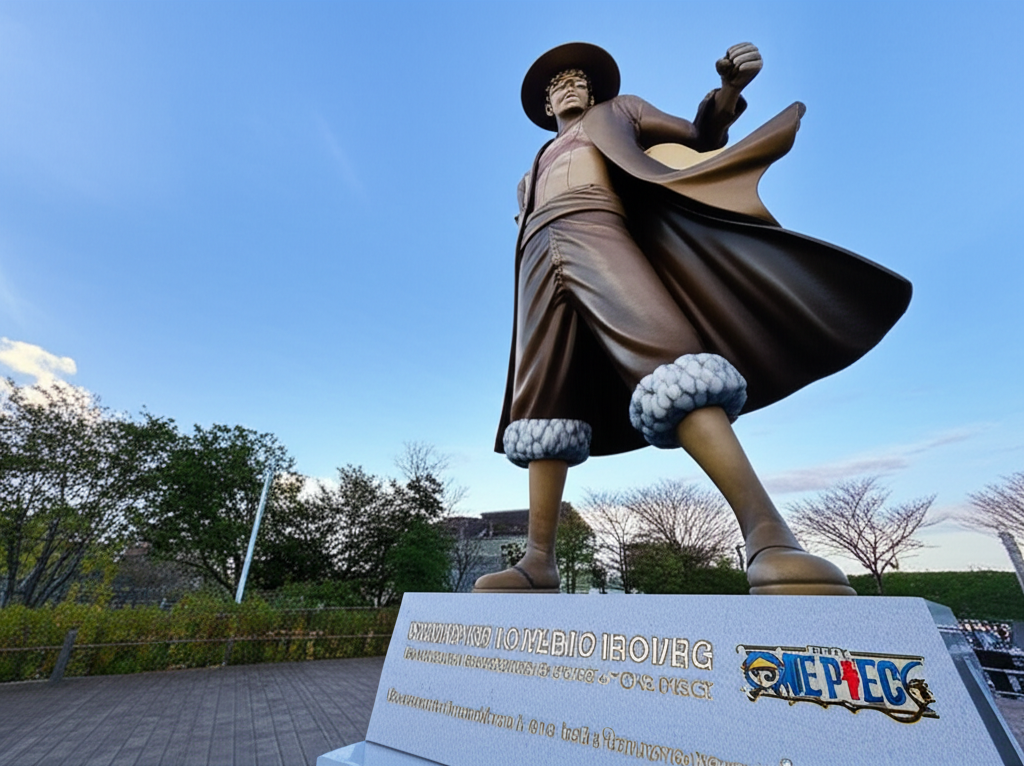One Piece's Heartwarming Journey: Kumamoto's Recovery and the Power of Straw Hats
Experience the Resilience of Kumamoto Through a "One Piece" Statue Tour, Remembering the Earthquake and Celebrating Reconstruction

In the heart of Japan, the southwestern prefecture of Kumamoto has embarked on a unique endeavor to boost tourism and honor its journey of recovery from the devastating earthquakes of 2016. A two-day bus tour now allows visitors to explore ten bronze statues of beloved characters from the globally acclaimed comic and animated series "One Piece," a creation of the Kumamoto-born manga artist Eiichiro Oda.
These statues, depicting Monkey D. Luffy and his nine crew members, are strategically placed across nine municipalities, offering a poignant reminder of the disaster while showcasing the remarkable progress of reconstruction. The tour, designed primarily for domestic tourists, operates monthly through September, with extra dates during August's school holidays. Plans for translation services may be implemented should international interest surge, recognizing the series' worldwide popularity.
The "One Piece" storyline follows Luffy's quest to become the pirate king, sailing the seas with his crew in search of the legendary treasure. Oda has been a steadfast supporter of Kumamoto's recovery, offering encouraging messages and illustrations in the wake of the quakes, including a heartfelt message from Luffy himself: "Hang in there" and "I will definitely come over."
The earthquakes of April 2016, with magnitudes of 6.5 and 7.3, tragically claimed the lives of 278 people across Kumamoto and neighboring Oita Prefecture, causing widespread damage to approximately 43,000 buildings. Kumamoto Castle, a significant tourist destination, also suffered extensive damage.
The installation of the "Straw Hat Pirates" statues began with Luffy in November 2018, culminating in the completion of all ten figures by July 2022. Notable locations include Sanji, the crew's cook, in the town of Mashiki, which suffered heavy damage, and Nico Robin, the archaeologist, in the village of Minamiaso, where a long bridge collapsed.
The tour costs 28,000 yen (approximately $200) per person, including two lunches, but excluding accommodation. It also provides visits to a quake memorial museum and a local railway line affected by the disaster, offering a holistic perspective on the region's resilience.
Other Versions
El conmovedor viaje de One Piece: La recuperación de Kumamoto y el poder de los sombreros de paja
Le voyage réconfortant de One Piece : Le rétablissement de Kumamoto et le pouvoir des chapeaux de paille
Perjalanan One Piece yang Mengharukan: Pemulihan Kumamoto dan Kekuatan Topi Jerami
Il commovente viaggio di One Piece: Il recupero di Kumamoto e il potere dei cappelli di paglia
ワンピース』心温まる旅:熊本の復興と麦わら帽子の力
원피스의 가슴 따뜻한 여정: 구마모토의 회복과 밀짚모자의 힘
Ang Nakatatagpusong Paglalakbay ng One Piece: Pagbangon ng Kumamoto at Kapangyarihan ng Straw Hats
One Piece's Heartwarming Journey: Восстановление Кумамото и сила соломенных шляп
การเดินทางอันอบอุ่นหัวใจของ One Piece: การฟื้นตัวของคุมาโมโตะและพลังของกลุ่มหมวกฟาง
Hành trình ấm lòng của One Piece: Sự phục hồi của Kumamoto và sức mạnh của băng Mũ Rơm

